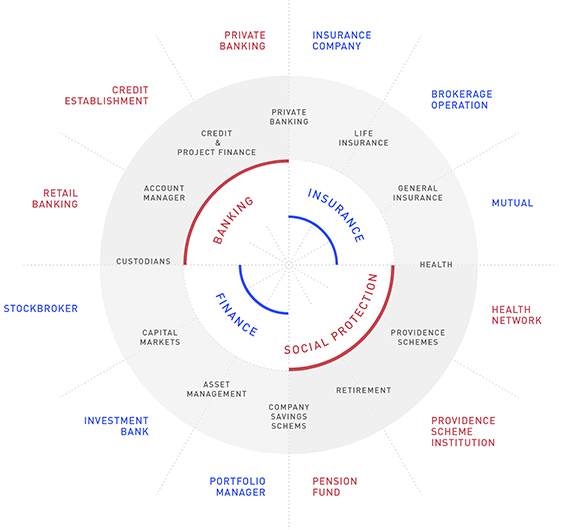03
Jun 2020

- News and Press
Health: the uncertain contours of sub-annual termination
A movement initiated in 2015 by the Loi Hamon, the infra-annual termination extends today to health insurance policies, whether collective or individual. An implementing decree is still awaited. An analysis by Thibault Galas, Lawyer at Fromont Briens and Guerric Bras, Actuary at Périclès Actuarial.
Provided initially by an amendment to the bill relating to the growth and transformation of companies (Pacte), it is finally the law of July 14, 2019 which sets up and defines the contours of the infra-annual termination of the complementary contracts health. Before December 1, 2020, a decree will specify the conditions for implementing this new system, which will apply to contracts already in progress when it comes into force.
Easier termination terms
In concrete terms, the option of infra-annual termination will be open after one year of cover, the date from which the request for termination may be made at any time and will take effect one month after its receipt by the insurer. This option must be mentioned in each membership form or contract and recalled after each notice of maturity or subscription.
The termination may take place by letter or any other durable medium, or, if the contract has been concluded at a distance, this same method must be offered for termination. The insurer must acknowledge receipt of the notification in writing. Despite this freedom in choosing the termination method, it is obvious that the insured will have to provide proof of his termination request. Otherwise, it will be impossible for him to criticize the insurer for not having taken into account his request or for having acknowledged receipt of it.
A termination mandate given to the new insurer
The text also imposes a specific obligation on the new insurer in the context of the succession of two contracts. If the insured has not already done so, the new insurer will have to carry out the formalities necessary for the exercise of the right of cancellation. It is in fact a transposition to the legislative level of a current practice of the insurer organizations which proposed to their policyholders models of letter of termination, even going as far as taking care of their sending after signature.

The termination may take place by letter or any other durable medium, or even remotely if the contract has been concluded remotely.
However, what was only a possibility here becomes an obligation, the law de facto assigning a mandate from the insured to the insurer. It will be up to insurers, in particular through their federation, to set up a system for securing these termination requests. We can also question how the insurer will be able to provide proof of this mandate when the contract has been concluded following a telephone canvassing.
Finally, the new organization must ensure that the insured’s coverage is not interrupted during the procedure.
Numerous effects with uncertain contours
This new option for sub-annual termination will not fail to raise issues of drafting contracts and managing terminations during the year. However, these should not obscure the actuarial consequences of this reform. The implementation of the sub-annual termination will have three major impacts: an increase in windfall effects, a decrease in pooling and consequences on the solvency of insurance organizations.
Obligation to publish the S / P ratio
The law of July 14, 2019 also modifies the specifications of the responsible contract: the insurers will have to indicate the amount and the composition of the management fees as well as the ratio, expressed as a percentage, between the amount of contributions collected and the amount of benefits paid. This obligation aims to provide better information to the insured in order to allow them to make the most of this new option for sub-annual termination.
Various reactions
In group insurance, the sub-annual termination will accentuate the consequences of the end of the designation clauses by facilitating the termination procedures. The organizations recommended or referenced in collective agreements retain a significant capacity for capturing VSEs and SMEs by offering a single rate and the mandatory minimum guarantees.
The establishment of termination facilities opens the field to a burst of development of mirror offers duplicating conventional guarantees, but with the possibility of tariff segmentation. This price differentiation will allow the good risk of the professional sector to be captured without carrying the same constraint of the organizations referenced to accept all the companies in the sector at the same price for the same guarantees.
The first targets of this reform are individual insurance, for which the impacts will be most visible. The possibility of organizing care upstream and canceling in a single month raises fears of a strategy of punctual alignment of guarantees with needs during treatment and therefore an increase in claims.
Added to this are the declarations of certain consumer associations on the price increases for complementary health insurance as well as the targeted marketing campaigns of online comparators which suggest the same consequences as those observed today in borrower insurance: a greater turn- over contracts.
Demutualization of risk accentuated
Aging leads to an increase in the consumption of health acts and therefore an increase in the associated insurance premium. From a certain age, it even becomes impossible to change the insurance contract because of the age limits for subscription. To offer more affordable coverage to seniors, certain organizations, notably mutual insurance companies, have decided to finance this excess risk with higher premiums for their young insured.
This population adept at comparators and having a higher propensity to cancel will be one of the big winners of the reform in terms of lower premiums. But at what cost ? Seniors who can no longer benefit from pooling will be doubly penalized: by the impossibility of changing insurance contracts and by the deterioration of the technical results of their schemes synonymous with tariff upgrades.
A direct impact on solvency
Finally, the impact on the solvency of insurers is essential. The increase in management fees for the implementation of intra-annual terminations, the increase in contract turnover and loss drift directly affect the coverage ratio. Added to this is the definition of premium volume in the calculation of health SCR not similar to life. In the standard formula, fourteen months of contributions are kept, corresponding to one year of coverage and two months’ notice. The end of this notice would probably lead to keeping only twelve months of contributions with the main consequence of an increase in solvency?
Published in L’Argus de l’assurance.
Other news
14
Sep 2021

- News and Press
The bumpy road of PRIIPs
13
Jul 2021

10
May 2021

22
Apr 2020

- News and Press
